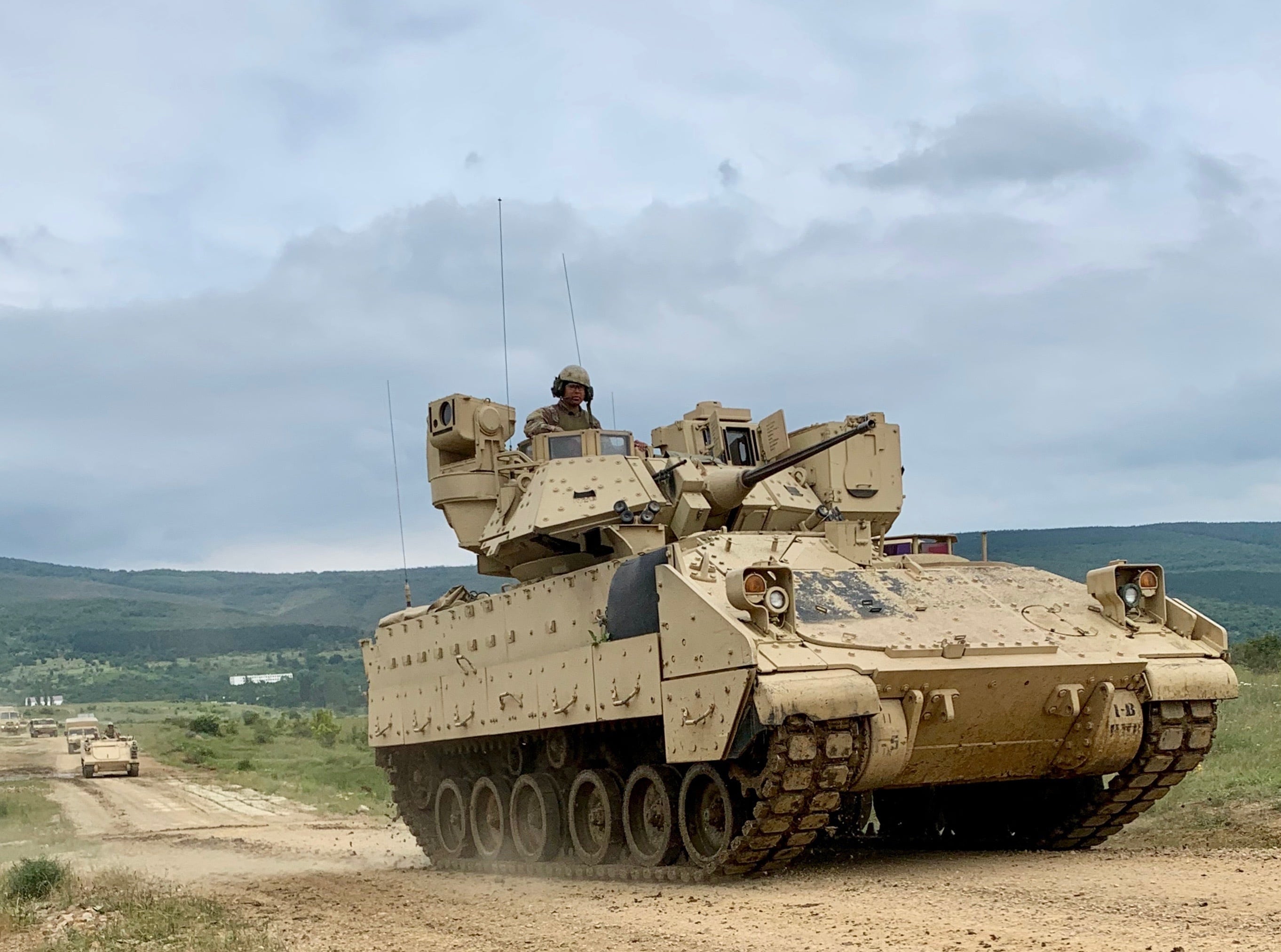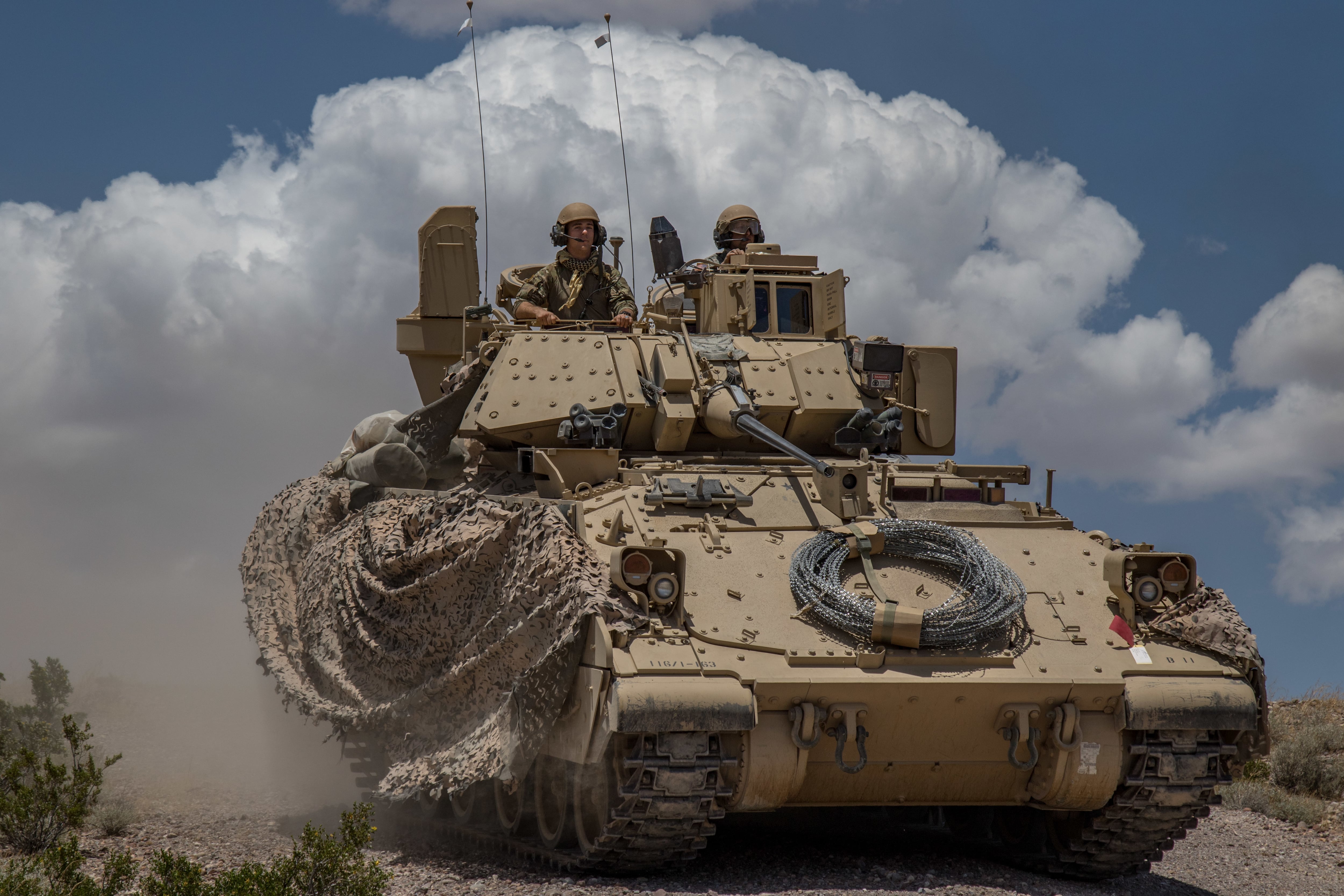The Army’s main vehicles, from Bradleys and Strykers to the Abrams tank, have served them well for decades. But the demands of the modern battlefield, from sensing and processing loads of data unforeseen in past conflicts to moving around a different type of physical and virtual terrain, mean a need for a new way of thinking about ground vehicles.
The Army’s Next Generation Combat Vehicle Cross Functional Team is the group tasked with that challenge. Some of that team’s work includes an Optionally Manned Fighting Vehicle, which will eventually replace the Bradley Fighting Vehicle. Also, the Armored Multi-Purpose Vehicle, is replacing the aging M113 Armored Personnel Carrier, which has been in service since the 1960s.
Brig. Gen. Ross Coffman leads the NGCV CFT and shared with Army Times some of what it’s taking to push vehicle development into the future for the service’s needs.
RELATED

At last year’s AUSA annual meeting, Coffman grabbed attention with an unorthodox way of looking at the next evolution of vehicles for Army combat.
Coffman applauded the utility of the M1 Abrams tank, the workhorse of armor for decades. He noted it still has upgrades coming and a few more years of service left. But the Army needs to plan for its replacement. And that replacement could take many forms, most of them dictated by the threats and needed capabilities to meet those threats.
So a tank-like vehicle might not be the actual future Abrams replacement.
Regardless of the replacement or the platform, each system built must be upgradeable and evolve as science and technology offer better ways to do more things.
The following has been edited:
What have been the major challenges and achievements of the NGCV CFT in the past year?
Time is always a challenge in our space. I am proud to say that we have achieved a major milestone with the release of the Optionally Manned Fighting Vehicle Request for Proposal in record time. I think much of that has to do with the relationships we have built since moving the CFT to the Detroit Arsenal. This allowed us to be co-located with both the Program Executive Office for Ground Combat Systems, the Ground Vehicle Systems Center, ACC Warren and industry. This co-location has paid major dividends and allowed us to speed up the process exponentially.
What are next year’s goals, milestones, testing, advancements for the NGCV CFT?
We have several milestones we are looking forward to next year. The low rate initial production for AMPV should be wrapping up around March and we look forward to fielding the first units shortly thereafter. Also, in March we will begin our first large-scale soldier experiment for our Robotic Combat Vehicles. What we learn from this experiment will inform our decisions on how to move forward with the RCV program. Finally, the Army will be announcing which offeror(s) will receive a contract to create OMFV prototypes in the Spring 2020.
How will the fully fielded NGCV change the mechanized portions of the Army’s ground combat elements?
We are working to field several vehicles that have the potential to revolutionize the way the Army conducts ground combat operations. The incorporation of unmanned, autonomous vehicles and AI-enabled decision making platforms could give leaders dramatically more time and space for decision making and remove soldiers from high risk tasks like combined arms breaches and Chemical, Biological, Radiological, Nuclear and Electromagnetic reconnaissance and detection.
How will the above anticipated changes affect the remainder of the Army?
The integrated nature of combat operations under multi-domain operations will change the way everyone across the Army fights. NGCV, along with all the CFTs, are working hard to collaborate, so all of the great tools we are developing for soldiers complement each other on the future battlefield.
What are the major challenges, hurdles in the near, mid and far term for ultimately fielding the NGCV?
I think the major challenge going forward is maturing commercial autonomy technology to the point where it is ready for an off road, combat environment. We know the potential exists for autonomous vehicles because the automotive industry has done a lot in maturing that technology. But taking that technology off road and into the woods presents a new set of challenges no one has mastered yet. The same is true for AI. Taking commercial technology and maturing it for the battlefield presents challenges that we don’t have easy answers for.
Todd South has written about crime, courts, government and the military for multiple publications since 2004 and was named a 2014 Pulitzer finalist for a co-written project on witness intimidation. Todd is a Marine veteran of the Iraq War.




